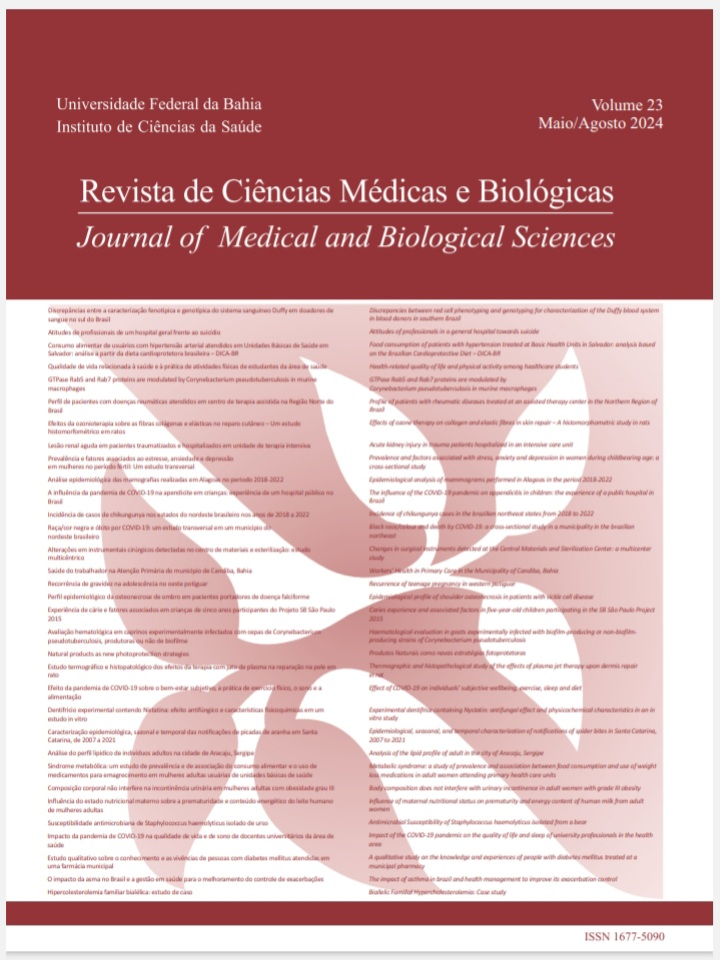Susceptibilidade antimicrobiana de Staphylococcus haemolyticus isolado de urso
DOI:
https://doi.org/10.9771/cmbio.v23i2.64118Keywords:
Wild animals; Staphylococcosis; Veterinary microbiology; Microbial resistanceAbstract
Abstract
Introduction: the emergence of antibiotic-resistant bacteria is a growing concern in both human and veterinary medicine. Although
Staphylococcus haemolyticus is commonly isolated from various lesions in wild animals, this study is the first to report the isolation
of S. haemolyticus from a bear. Objective: To evaluate the antibiotic susceptibility profile of S. haemolyticus isolated from a dermal
lesion of a zoo bear. Methodology: isolation was performed by culture on a blood agar medium. Colonies formed were identified using
MALDI-TOF mass spectrometry. The sensitivity profile was defined by disk diffusion test, following the CLSI M2-A8 methodology (2003),
and classified as recommended by BrCAST (2024). Results: the bacterium demonstrated high sensitivity to amikacin, gentamicin,
doxycycline, and tetracycline. Sensitivity was observed for azithromycin, erythromycin, and clindamycin. An intermediate sensitivity
profile was observed for ciprofloxacin and levofloxacin. The bacterium showed resistance to oxacillin, ampicillin, amoxicillin, cephalexin,
and amoxicillin. Conclusion: this study highlights the importance of including S. haemolyticus as a possible etiological agent of infections
in wild animals and the need for antibiotic sensitivity testing to guide treatment. The variability in response to different antibiotics
reinforces the importance of carefully selecting antimicrobials in managing these infections.
Downloads
Downloads
Published
How to Cite
Issue
Section
License
Copyright (c) 2024 Journal of Medical and Biological Sciences

This work is licensed under a Creative Commons Attribution 4.0 International License.
The Journal of Medical and Biological Sciences reserves all copyrights of published works, including translations, allowing, however, their subsequent reproduction as transcription, with proper citation of source, through the Creative Commons license. The periodical has free and free access.


